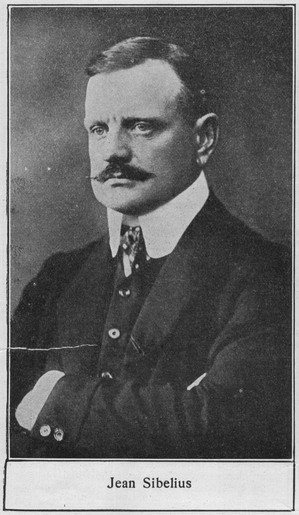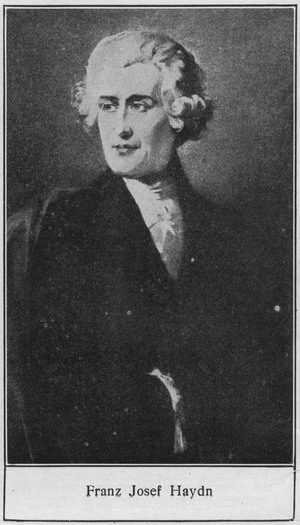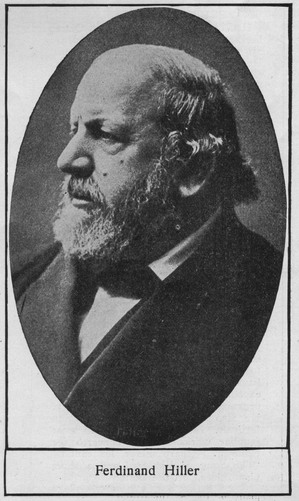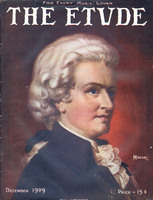Sibelius was born at Tavastehus, Finland, December 8, 1865. He originally intended to study law, but his musical proclivities proved too strong for him. He became a student at the Musical Institute at Helsingfors in 1885, where he remained until 1888. The following year he went to Berlin and became a pupil for counterpoint of Albert Becker. In 1891 he proceeded to Vienna, and there studied under the veteran composer, Carl Goldmark. In 1893 Sibelius was appointed instructor of theory at the Musical Institute and Orchestra School, Helsingfors, where he has been eminently successful. He has done a great deal on behalf of Finnish music, especially as regards Finnish folk-song. Though he is justly famed as a teacher, having now become principal of the institute at which he formerly studied, it is as a composer that Sibelius is best known to the world. His opera Tornissa olija impi (“The Maid in the Tower”), which was produced in Helsingfors, 1896, is usually regarded as the first Finnish opera, though there is one by Pacius which precedes this work. He has written two symphonies and several works for orchestra, including Tuonela (“Hades”) and Kuolema (“Death”). He has also composed many piano pieces and songs, which are beginning to become popular. His music is unmistakably “Northern” in character, and strikes a distinctly national note.
Franz Josef Haydn was born at Rohrau, Lower Austria, March 31, 1732, and died at Vienna, May 31, 1809. He was the second son of a wheelwright who was also the organist and sexton of the village church. He commenced to learn music of his cousin, Johann Mathias Frankh, at the age of five. Three years later he went to Vienna as a chorister of St. Stephen’s Church, under George Reutter, who sorely neglected him. In 1748 he was dismissed, owing to his voice having broken. For the next few years he lived in obscurity. He kept himself by giving music lessons, and studied when and where he could. The poet Metastasio helped him a little, and so did Porpora. In 1758 Count Ferdinand Morzin appointed him music director at Lukavec. In 1760 he entered the service of Prince Paul Esterhazy as second capellmeister, from which he was later promoted to first capellmeister. Prince Paul was succeeded by his brother, Prince Nicholas, in 1762, and from then on Haydn’s career was one of great industry, interrupted only by the occasional “teapot” storms of his royal master and the less endurable and more frequent outbursts of his shrewish wife. During that time Haydn’s fame gradually increased, and his compositions became famous. He is described as “The Father of the Symphony,” and composed 125 works in that form, besides numerous other orchestral and choral works—including “The Creation.”
 STEPHANE RAOUL PUGNO.
STEPHANE RAOUL PUGNO.
(Pu’-nyo.)
Pugno was born in Paris, June 23, 1852. He studied at the Conservatoire, where he won the first piano prize in 1866, first harmony prize and first medal for solfeggio in 1867, and first organ prize in 1869. He was organist of Saint Eugene, 1872-92. and chorus master at the Théâtre Ventadour in 1874. In 1892 he became a professor of harmony at the Paris Conservatoire, until 1896, when he was appointed professor of the pianoforte at the same institution, which position he relinquished in 1901. He has composed a large number of light operas, which have been very successful, as well as much music of a more serious character. His pianoforte compositions have been very successful, the most familiar to our readers, perhaps, being “Farandole.’ It is, however, as a pianist that Pugno has earned the highest reputation, and his interpretation of Mozart’s music has earned him especial commendation. His first appearance in London, which took place in 1894 at a recital of his own, was a great success, and he has established himself as a great favorite in England. His subsequent visits to the United States have added to his reputation and given pleasure to many thousands of American concert-goers.
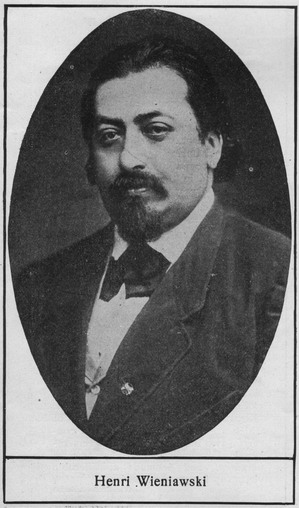 HENRI WIENIAWSKI.
HENRI WIENIAWSKI.
(Vee-nee-ahvs’-ki.)
This celebrated violinist was born at Lublin, Poland, July 10, 1835, and died at Odessa, April 2, 1880. In early youth he went with his mother to Paris, where he studied at the Conservatoire under Clavel and Massart. In 1846 he obtained the first prize of the violin class. He then returned to Russia, and during 1849-50 studied harmony. His reputation as violinist grew rapidly, and in 1860 he was appointed imperial chamber virtuoso at St. Petersburg, where he remained till 1872. He resigned to undertake a tour to America with Anton Rubinstein, which extended on his own account till 1874. About this time Vieuxtemps, who was at Brussels, became ill, and Wieniawski was telegraphed for. He arrived in the Belgian capital in 1875 and worked with great success until Vieuxtemps was able to resume his teaching. Wieniawski again became a victim of the “wander-lust” and continued touring through many countries and cities till he died in a Russian hospital in a state of destitution. His violin compositions are familiar to all violinists, especially his two mazurkas, “Kuyawiak” and “Obertass,” both of which are frequently heard. His concertos, two in number, are also remembered. His music shows his fiery temperament, and demands considerable virtuosity for good rendering.
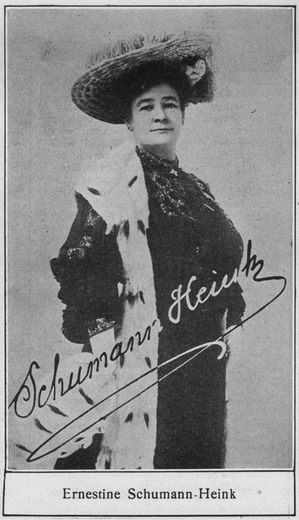 ERNESTINE SCHUMANN-HEINK.
ERNESTINE SCHUMANN-HEINK.
(Heink, ei as “eye.”)
Mme Schumann-Heine: was born in Lieben, near Prague, June 15, 1861. She was the daughter of an Austrian army officer in very poor circumstances. At the age of ten she went to an Ursuline convent, where she sang, entirely by ear, in the choir. Materna, who heard her sing, was impressed with her voice, and was instrumental in securing her an engagement at the Dresden opera, 1878. Her contract also obliged her to sing in church, where her imperfect musical knowledge hindered her greatly. She accordingly took lessons of Franz Wüllner. In Dresden she married a retired army officer named Heink, and in consequence lost her operatic engagement. A year later she made her appearance in Hamburg. For the next five years she was very unhappy, and often in dire straits. A brilliant success at a Berlin benefit concert, however, earned her an engagement in that city for the following summer. Her success reached the ears of the Hamburg director, who gave her a more important part to play. She scored a great success. About this time she separated from her husband and married Carl Schumann, the actor. A London success followed, and in 1898 she came to America. She scored a great triumph here, has become an American citizen and has never lost the public affection which she secured in this country.
Hiller was born at Frankfort, October 24, 1811, and died at Cologne, May 25, 1885. He was of Jewish descent. He performed a Mozart concerto at the age of ten in public. In 1825 he became a pupil of Hummel at Weimar. Hummel, perceiving his bent as a composer, put him through a very severe course of instruction. In 1827 he accompanied Hummel on a professional tour to Vienna, where he had the unique privilege of being present at the reconciliation which took place between Hummel and Beethoven—then on his death-bed. In 1828 he went to Paris, then the Mecca of Europe, and here he soon established himself as a teacher, composer and fine performer of Beethoven. In Paris Hiller enjoyed the acquaintance of many distinguished people, including Mendelssohn, Chopin, Cherubini, Rossini, Liszt, Meyerbeer and Fétis. In 1836 he went back to Frankfort, passing on to Milan in 1837, where he again met Liszt and Rossini. Here he began his most famous composition, the oratorio “Die Zerstörung Jerusalems,” which interested Mendelssohn so much that Hiller was invited to produce the work at the Gewandhaus, Leipsic, 1840. In 1850 he became capellmeister at Cologne, where he organized the Cologne Conservatory. He also conducted the lower Rhine festivals. In 1884 he retired. His most familiar works are the concerto for piano in F sharp minor, his cantata, “The Song of Victory, and a short piano piece, “At the Guitar.”


